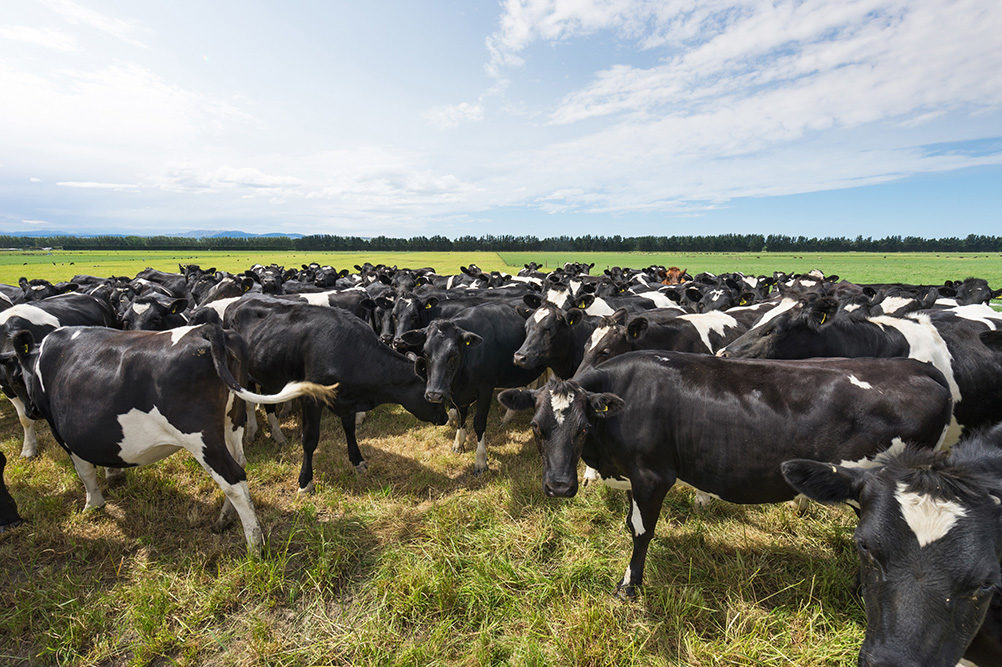The Mycoplasma bovis Programme has accepted almost all of the recommendations from two reviews into a backlog of trace animal movements, and the surge of activity to process them, in the lead up to Moving Day and winter movements.
The reviews were commissioned to look into the cause, and possible impacts, of the backlog, and to recommend how the programme could improve its systems and processes.
One review was conducted by MPI’s chief science adviser, Dr John Roche, and an independent review commissioned by DairyNZ was conducted by disease management expert Dr Roger Paskin.
Both reviews had the support of Beef + Lamb New Zealand.
MPI chief science advisor review
Dr Roche’s review found he backlog built up due to issues with managing the flow of information between functions, and in the disease management team’s structure and resourcing. The backlog was smaller than initially thought and while it was primarily trace movements that built up during early 2019, some of the movements dated back to 2018.
While the backlog may have allowed some further spread of the disease, Dr Roche does not believe it has impacted on the chances of successfully eradicating M. bovis.
The independent Technical Advisory Group has also been asked to consider the impact of the backlog and is expected to report back soon.
DairyNZ’s independent review
Dr Paskin’s report identified issues related to the programme structure, staffing, training, management, and supporting tools which resulted in a backlog of cases dating back (in a number of cases) about seven months.
The primary cause was an accumulation of traces (animal movements) to and from infected properties which had not been followed up.
Recommendations and reactions
The reports from Dr Roche and Dr Paskin together made 43 recommendations to improve the systems and processes within the M. bovis Programme. These include greater regional decision-making, the importance of farmer involvement, and improving structures, systems and resourcing.
Many of the suggested changes are already under way – for example, enabling greater regional decision-making, and better data management systems – and almost all of the other recommendations have been accepted.
Both Dr Paskin and Dr Roche commended the M. bovis Programme for the immediate steps taken to rectify the issue once they knew about the backlog, and highlighted the dedication and loyalty of staff involved in the eradication effort.
MPI director-general Ray Smith said that while the backlog was disappointing, the two reviews had provided concrete ways to improve the programme’s systems and processes.
“We’re very sorry for the impact that this has had on affected farmers, and that we had to take the action we did at a busy time of year for many of them. We are focused on completing testing for the farms affected by the surge as quickly as we can so they can get back to farming,” said Mr Smith.
“The programme is working hard to implement the recommendations of the reviews, starting with enabling more regional decision-making, and rolling out a bespoke data management system.
“Eradicating M. bovis from New Zealand is a huge challenge. However, we remain confident that by working in partnership with industry and farmers on the ground we can succeed and make sure New Zealand can farm free from this disease in the future.”
DairyNZ chairman Jim van der Poel says that actioning the 43 recommendations from the reviews will have a significant impact going forward.
“M. bovis has a financial and emotional impact on the lives of affected farmers. The findings from these reviews will improve processes that will strengthen the programme, and help farmers affected by the disease. We’ll be working with MPI and Beef + Lamb to make sure this happens”.
Beef + Lamb New Zealand chairman Andrew Morrison said the improvements to the programme should go a long way to ensuring farmers dealing with the disease are better supported.
“The phased eradication of M. bovis is complex and challenging and we know affected farmers and rural communities are hurting. Implementing these recommendations gives us the best possible chance to eradicate M. bovis.”
Outcomes of the surge
It was projected that up to 250 Notices of Direction restricting cattle movements (NODs) might be issued before ‘Moving Day’. However, there were 171 NODs, with 304 farms placed under Active Surveillance.
Of those NODs, 116 are beef properties, 23 are dairy, and 32 are grazing or lifestyle. It is positive that there were fewer dairy farms requiring restrictions, as beef properties present a much lower risk of spreading the disease.
The two reviews and table of recommendations can be read here.
Source: Ministry for Primary Industries












